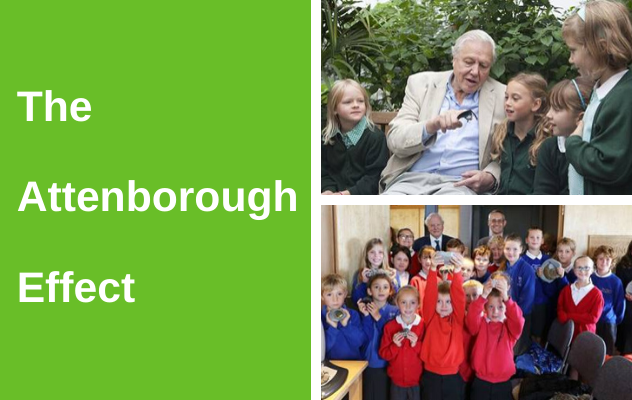Rachel Hall from educational resource provider Busy Things shares her top tips for getting your pupils interested in STEM subjects

More people are developing a passion for sustainability, finding environmentally friendly options for their food, clothes and many other aspects of their lifestyle. This is, in part, thanks to Sir David Attenborough’s Blue Planet series. The Attenborough effect is taking the world by storm, with students as young as 16 years old — and even younger —helping to drive the change, and Greta Thunberg making headlines for her commitment as a climate activist.
Here, I will be discussing the importance of STEM subjects – science, technology, engineering and mathematics - along with a few tips for getting your students involved.
STEM interest rising
With the Blue Planet series showing just how exciting it can be to explore nature and sea life, it seems to be having a profound effect on the number of children wanting to get involved with STEM subjects. So much so, that there was a rise of 5.1% in the number of students in England taking the science double award this year compared to last year.
As well as showcasing iconic moments between sea creatures, Blue Planet has shown the shocking, irreversible damage we have caused with waste, namely our overuse of plastic. This, in turn, has resulted in a 53% reduction of single-use plastic since it aired, as more people take the time to look for alternatives and adopt this into other aspects of their lifestyle.
The importance of STEM
STEM affects every aspect of our lives, from knowing how to deal with your finances properly, to being in the know about climate change. And, as the future of our world depends on the understanding of these topics, it's vital to encourage the younger generations to get involved with them.
Unfortunately, some young people are put off with engaging with or even considering the subjects, possibly because of the reputation of STEM as being more difficult than other options.
However, a report from EDF Energy has revealed that jobs in the STEM sectors have been predicted to rise at double the rate of other occupations from 2016–2023. This means that there are now more opportunities than ever for young people to secure a role in a well-paid job in the future.
My three top tips
1. Use interactive educational tools
Technology is taking over, so you may not be that surprised to hear that 1 in 10 UK children are spending more than 50 hours a week in front of a screen. Although this may be of concern to some, there are ways they can use their devices to benefit their learning of STEM subjects.
Advising their parents to download an educational game on their computer or tablet can help to make learning trickier subjects more exciting and encourage children to develop their understanding outside of the classroom. Additionally, you can incorporate these fun, interactive games into your lessons to add some variety to their learning and make learning STEM subjects more enjoyable.
For example, at the end of teaching a new maths or science topic, you could allow your students some time to test their knowledge with an online resource. As this is a change from standard classroom learning, it's sure to get them engaged, while also showing you how well they have understood. Similarly, you could use these to introduce a complicated topic. By letting your students have fun with the topic initially, it's likely to seem simpler to them, and this will get them more motivated to learn about it. Plus, these interactive resources are incredibly helpful for teaching repetitive things that your students may find boring, like times tables, in a more engaging way.
2. Encourage outdoor learning
One of the best ways to get children interested in the world around them is to get them out and about to experience it. Allowing them to get hands-on with plant life, taking them on school trips to the zoo to see the animals and encouraging them to describe the things they see, hear and smell when they're on their lunch break can all add to the learning experience.
The more creative you make these activities, the more likely the pupils in your class are going to engage with their learning. For example, why not challenge them to make a list of wildlife and flowers they spot during break times? When they come in, you could even ask them to find out a fact about some of the things they saw. They'll love being able to share information that you might not know, and this can help to generate their interest in science especially!
3. Incorporate STEM into their daily activities
STEM is important to all our daily activities, whether we're aware of it or not. But, you can help to incorporate this more into children's lives in a fun and interactive way. One way is through educational play, including games that involve counting the correct money to pay out at the supermarket, or hosting extra-curricular baking classes to help them learn about measurements.
You could even conduct fun experiments with them, including growing your own class fruit and vegetable patches to help them to understand how plant life works. Encouraging them to ask questions when they want to know more and finding out the answers together is also an effective learning tool that you can use to pique their interest in STEM subjects.

